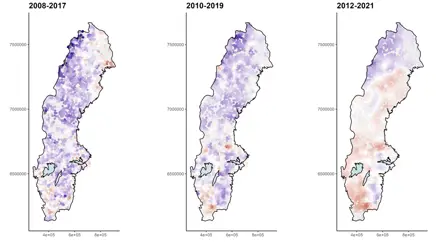Making the most out of synoptic sampling campaigns and large datasets (UNSUM)
Project overview
Participants
Additional info
More related research
Short summary
In this project, new statistical methodology is developed to analyze trends in data from the Swedish Lake Survey to identify ongoing changes in brownification and oligotrophication and connect them to an extensive list of potential drivers.
Background
Sweden has extensive, long-term and high-quality monitoring programs to monitor the state of the environment. These programs have been ongoing for decades and produce large amounts of data that are publicly available in online databases. Unfortunately, the development of appropriate statistical methods has not received the same focus and many of the scientific evaluations of temporal trends in data rely on statistical trend methods that are 40 years old and developed for single sites and short monitoring periods, resulting in a substantial loss of information carried by monitoring.
Aim
The main focus of this project is to
- develop standardized and sound practices to evaluate spatially varying trends in monitoring programs with high spatial and low temporal resolution, using the Swedish Lake Survey as basis.
- use these methods to identify regionally differentiated trends of brownification and oligotrophication of Swedish lakes and
- to discriminate between large-scale and local scale drivers of brownification and oligotrophication.
